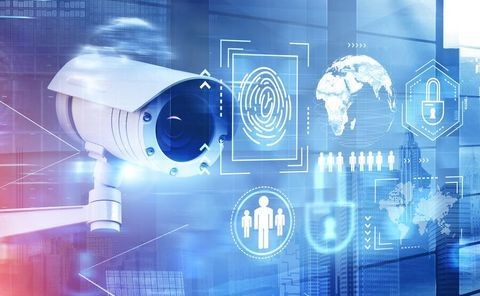Post-KSR Patent Prosecution “Survival Guide”
Client Alert | 5 min read | 05.16.07
In the wake of the US Supreme Court’s ruling in KSR International v. Teleflex, US patent applicants are likely to encounter a surge of obviousness rejections from the USPTO. Undoubtedly, KSR has dramatically altered the patent prosecution landscape: some arguments that might have prevailed prior to KSR may no longer be viable. In this alert, we first summarize the KSR decision, and then predict the top arguments for combating post-KSR obviousness rejections before the USPTO.
In KSR, the Supreme Court reviewed the “teaching, suggestion, or motivation” test (“TSM Test”), which held that “a patent claim is only proved obvious if ‘some motivation or suggestion to combine the prior art teachings’ can be found in the prior art, the nature of the problem, or the knowledge of a person having ordinary skill in the art.” While the Supreme Court found that there is “no necessary inconsistency” between the TSM Test and the controlling Supreme Court precedent – primarily the Supreme Court’s 1966 Graham v. John Deere decision – it rejected a “rigid” application of the TSM Test, stating that a court errs when it “transforms the general principle into a rigid rule that limits the obviousness inquiry.” In particular, the Supreme Court called for a “broad inquiry,” and invited lower courts to look at any “secondary considerations that would prove instructive.” These “secondary considerations” have been part of the obviousness determination as far back as Graham, but they now are elevated in importance post-KSR.
The Supreme Court did not, however, articulate any well-defined principles to govern the types of “secondary considerations” that might “prove instructive” for this inquiry. Instead, in the course of a broad ranging discussion, it offered a number of specific indications of obviousness as noted below. While none of them is really new, in view of their resulting mantle of Supreme Court approval, US patent applicants should expect to see these examples liberally referenced by USPTO Examiners:
-
A “combination of familiar elements according to known methods” that “does no more than yield predictable results,” or where such elements in combination do “ no more than they would in separate sequential operation.”
-
The invention “simply arranges old elements with each performing the same function as it had been known to perform, and yields no more than one would expect from such an arrangement.”
-
The invention involves “the mere application of a known technique to a piece of prior art ready for improvement” (the Supreme Court offered no elaboration to what it meant by “ready for improvement”).
-
Whether a particular combination was “obvious to try.”
-
A designer of ordinary skill “facing the wide range of needs created by developments in the field of endeavor, would have seen a benefit to upgrading” the prior art in the manner claimed.
-
The invention is suggested in view of “demands known to the design community or present in the market place.”
-
When a work is available in one field of endeavor, “design incentives and other market forces can prompt variations of it, either in the same field or in a different one.”
-
A “design need or market pressure to solve a problem” for which there are “ a finite number of identified predictable solutions,” may suggest to a person of ordinary skill “to pursue the known options within his or her technical grasp.”
One of the most significant developments appears to be the Supreme Court’s new emphasis on “market forces” in driving innovation, and therefore providing a basis of obviousness—“[I]t often may be the case that market demand, rather than scientific literature, will drive design trends.” The importance of “market forces,” “design incentives,” “market demands,” and other similar terms was mentioned no fewer than six different times within the Supreme Court’s opinion. The Supreme Court also emphasized that a person of ordinary skill in the art is “a person of ordinary creativity, not an automaton.” Thus, taken together, USPTO Examiners will now likely rely frequently on obviousness rationales that no more than ordinary creativity was necessary in light of the market forces to arrive at the claimed invention. In that regard, it should be noted that an invention that satisfies a market or technological need based on recent developments in the field may actually be used as an indication of obviousness.
On the other side of the coin, the Supreme Court offered little guidance for what might be indications of non-obviousness. It did, however, endorse the longstanding proposition that “when the prior art teaches away from combining certain known elements, discovery of a successful means of combining them is more likely to be non-obvious.” It also reaffirmed that when two known elements which form the claimed combination “cannot be combined [in view of the known prior art]…in the manner described” in the claim, the combination is likely to be non-obvious; and it restated (albeit with limitations) its earlier admonition in Graham against hindsight reconstruction of the invention.
In light of the Supreme Court’s decision, we predict the following arguments will, if available, best combat obviousness rejections in the post-KSR world:
-
One of the references affirmatively teaches away from the claimed invention.
-
It is impossible to combine the cited references because they are incompatible, or the combination would be inoperative.
-
A combination of the references would not replicate the claimed invention, due to claim features not found in either reference, or due to fundamental differences between one of the references and the invention.
-
The cited references are in widely divergent fields of endeavor (the Supreme Court did note, however, that it may be permissible for an Examiner to look to non-analogous art in some circumstances).
-
Lack of any articulable rationale to support the legal conclusion of obviousness.
-
The rejection is based on a hindsight reconstruction of the invention in view of the applicants’ own disclosure. The Examiner may, however, have recourse to “common sense.”
-
Long felt, unsatisfied commercial need. This argument must be made with care, because a recently evolving market demand for the modification made by the invention might actually be used as evidence of obviousness.
-
Commercial success.
Equally importantly, however, will be the manner in which applications are drafted post-KSR. Background and summary sections should be kept short and should steer away from comments on “market demands,” “problems to be solved” and “optimization advantages.” Such statements could be used to support an Examiner’s position that recent market forces drove the change—not true innovation.
Contacts
Insights
Client Alert | 6 min read | 04.23.24
Update on Singapore’s Cybersecurity (Amendment) Bill 2023
The Cyber Security Agency of Singapore (CSA) is currently in the process of introducing the first ever amendments to its Cybersecurity Act (CS Act) 2018 via the Cybersecurity (Amendment) Bill. Through these Amendments, CSA is looking to account for advancements in Singapore’s technology and business landscape since 2018. It is also hoping to holistically enhance the cybersecurity of not only the country’s critical information infrastructure (CII) but also other digital infrastructure important for Singapore’s economy.
Client Alert | 3 min read | 04.22.24
Client Alert | 1 min read | 04.18.24
GSA Clarifies Permissibility of Upfront Payments for Software-as-a-Service Offerings
Client Alert | 4 min read | 04.18.24



